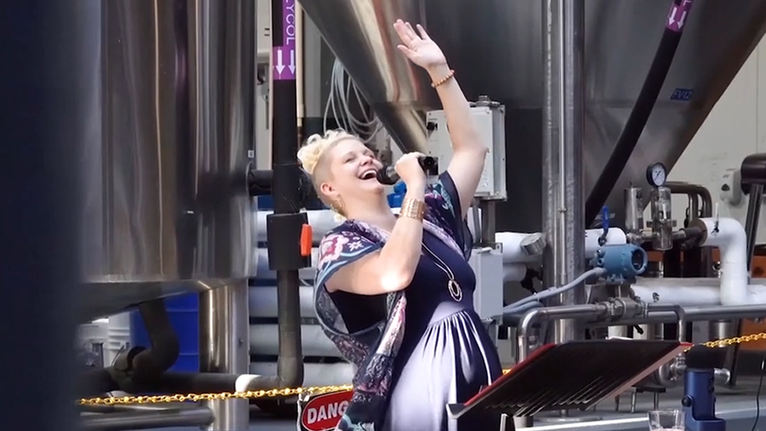Vocal Injuries Should Not Be Seen as Career-Ending
Two years post-surgery, bronchitis and vocal rest, Danielle’s outcome has been beyond her “wildest dreams.”
“I quickly became aware I had a completely healed vocal cord,” Danielle recalled. “It’s like I traded in a sedan for a sports car. There is color in my voice again.”
Everything Danielle heard about vocal surgery within the performance community proved untrue.
“Our society looks at sports athletes and says, ‘Wow, that was a hard hit,’ and hopes for a full recovery,” explained Dr. Howell. “But there’s an unfortunate culture of blame when injuries happen to vocal athletes. Danielle was doing all the right things. She just uses her voice at a much higher level than non-professional or other performance voice users.”
At the end of the day, it simply comes down to the anatomy. The blood vessel on Danielle’s cord is the result of genetic bad luck. It was vulnerable sheerly because of its location on the striking surface of the cord. Had it been located in a slightly different place, she might never have experienced a bleed at all.
But vocal injuries are not and should not be seen as career-ending.
In August 2020, almost exactly one year to the day from her surgery, Danielle sang an outdoor performance for the Cincinnati Opera as part of their COVID-19 pandemic outreach response.
About a year later, Danielle was preparing for her first audition since COVID-19 put a pause on all performances beginning in the summer of 2020.
“I pulled out my aria book and sang through them,” said Danielle. “I was amazed again at the agility of my voice, having not thoroughly warmed up in over a year.”
“Before surgery, I had a specific warmup regime and cool down, and still do, but I couldn’t have just rolled out of bed and sung through these extremely difficult arias like I’m able to do now.”
Danielle no longer lives in fear of her profession or voice being taken from her due to injury thanks to the expertise and compassionate care provided at the UC Health Voice & Swallowing Center and the leading-edge technology and research that is only available at an academic medical center.
“People say they can hear the difference in my voice,” said Danielle. “I am flabbergasted in how fantastic my results are.”


